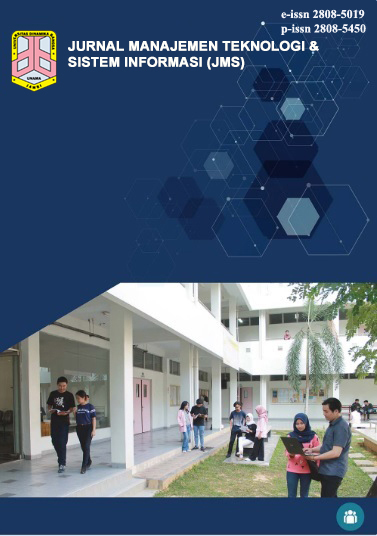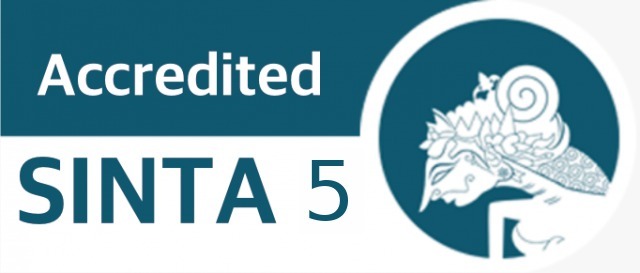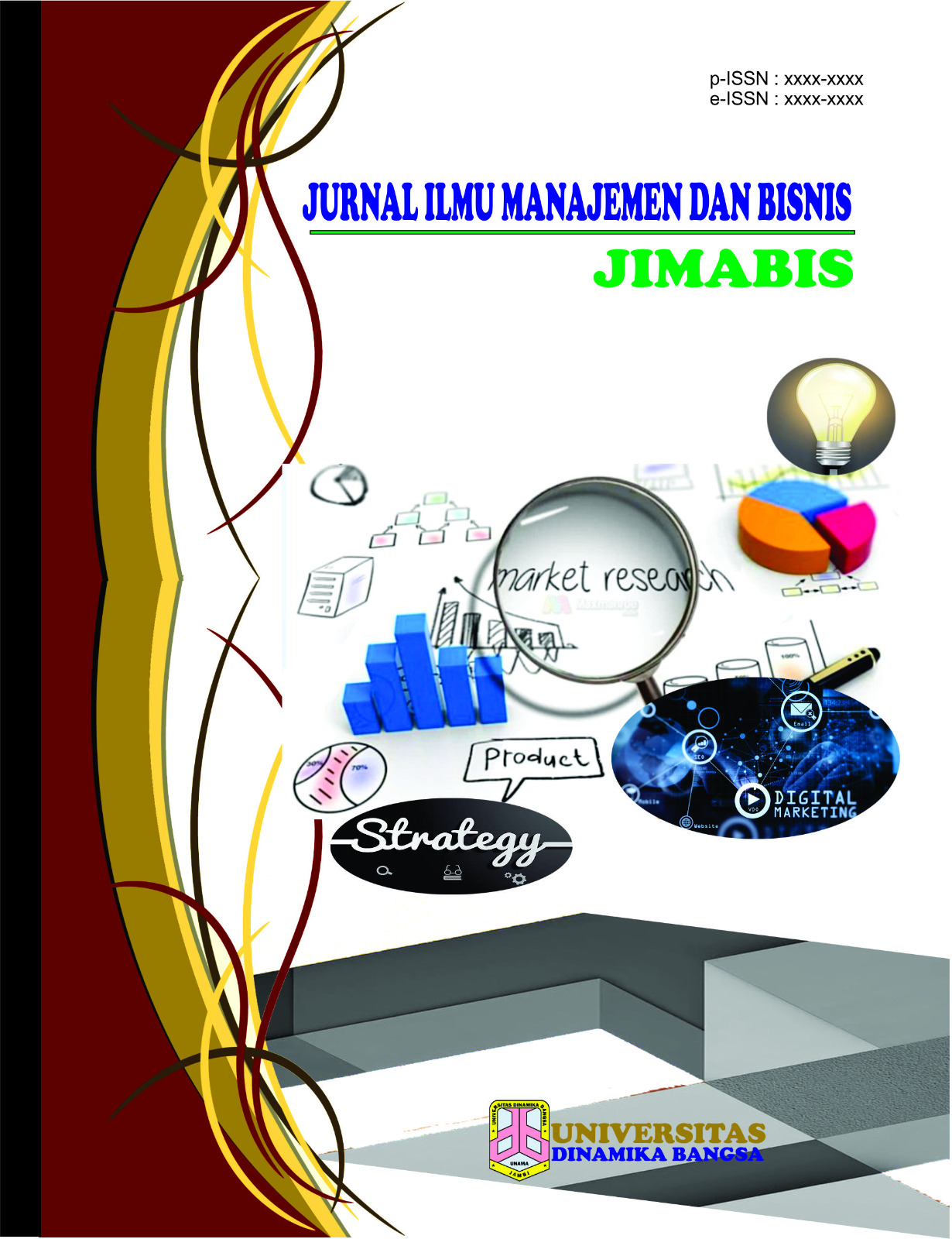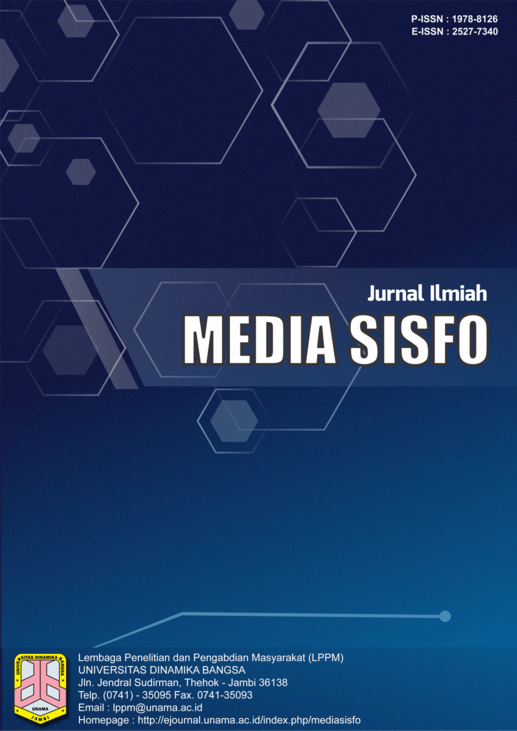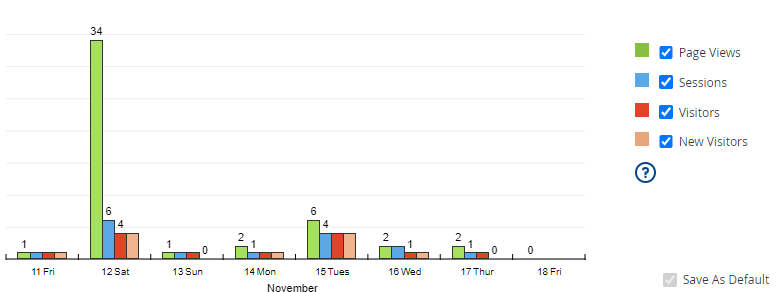Analisis Model Arsitektur Enterprise Pada Sistem Informasi Dinas Pendidikan Kota Jambi
DOI:
https://doi.org/10.33998/jms.2024.4.2.1824Kata Kunci:
model, arsitektur, enterprise, TOGAF ADMAbstrak
Pemanfaatan arsitektur enterprise dalam menciptakan keselarasaan antara pelayanan dan teknologi informasi dalam mendukung kebutuhan dalam organisasi disaat ini mampun mendatang. Agar enterprise berhasil menerapkan arsitektur enterprise tidak lepas tugas dari keberhasilan enterprise dalam menentukan bagaimana suatu organisasi mampu menganalisis dan merancang arsitektur enterprise yang terbaik baginya. Sebaiknya kita menggunakan metodologi yang lengkap dan mudah digunakan dalam merencanakan dan merancang arsitektur enterprise. Hasil dari pemodelan arsitektur enterprise dengan metodologi TOGAF ADM tersebut memberikan landasan untuk mengatasi permasalahan yang terjadi pada Dinas Pendidikan Kota Jambi adalah kurangnya integrasi data dan dukungan sistem yang terkait, sehingga efektifitas dan efesiensi kinerja kurang produktif. Pada penelitian ini dilakukan studi kasus untuk perencanaan arsitektur enterprise sistem informasi dengan menggunakan metode TOGAF Architecture Development Method (ADM) dengan bantuan rantai nilai dan alat-alat permodelan lainnya pada Dinas Pendidikan Kota Jambi. Tahapan-tahapan dari metodologi TOGAF ADM diterjemahkan ke dalam pemodelan arsitektur enterprise yaitu arsitektur visi, arsitektur bisnis, arsitektur sistem informasi dan arsitektur teknologi
Unduhan
Referensi
A. Munazilin, J. KHR Syamsul Arifin, K. Banyuputih, K. Situbondo, and J. Timur, “Perancangan Arsitektur Interprise Dalam Organisasi Kemahasiswaan BEM Saintek Dengan Menggunakan Metode Togaf,” Juni, vol. 7, no. 1, pp. 179–187, 2024, [Online]. Available: https://doi.org/10.55606/isaintek.v7i1.215.
Y. N. Chayati, E. Darwiyanto, and D. S. J. Dwi, “Perencanaan Strategis Sistem Informasi Menggunakan Metode Enterprise Architecture Planning (Studi Kasus: PT Etos Indonusa),” e-Proceeding Eng., vol. 7, no. 2, pp. 8332–8339, 2020.
N. Rizky and A. Fajar Firmansyah, “PERENCANAAN ARSITEKTUR ENTERPRISE MENGGUNAKAN TOGAF ADM VERSI 9 (Studi Kasus: Bimbel Salemba Group),” Stud. Inform. J. Sist. Inf., vol. 10, no. 1, p. 11, 2017.
F. Rani Oktavia, E. Rasywir, and L. Aryani, “Perencanaan Arsitektur Sistem Informasi Menggunakan Togaf Adm Pada Kantor Desa Simpang Terusan Dengan Evaluasi Ea-Scorecard,” J. Manaj. Teknol. Dan Sist. Inf., vol. 4, no. 1, pp. 667–679, 2024, doi: 10.33998/jms.2024.4.1.1715.
S. M. Putri, U. Hayati, and R. Dzulkarnaen, “Perancangan Arsitektur Electronic Medical Record (EMR) menggunakan Metode Enterprise Architecture Planning (EAP) Arsitektur Enterprise,” J. Inf. Technol., vol. 2, no. 1, pp. 25–30, 2020, doi: 10.47292/joint.v2i1.21.
M. M. Rad, “Sistem Informasi Jasa Pelayanan Mobil Pariwisata Menggunakan Metode Rad,” J. Sist. Inf. Univ. Suryadarma, vol. 8, no. 1, pp. 183–192, 2014, doi: 10.35968/jsi.v8i1.615.
R. P. Ardhiyani and H. Mulyono, “Analisis dan Perancangan Sistem Informasi Pariwisata Berbasis Web sebagai Media Promosi pada Kabupaten Tebo,” J. Manaj. Sist. Inf., vol. 3, no. 1, pp. 953–972, 2018.
A. W. Syaputra and S. Assegaff, “Analisis Dan Implementasi Load Balancing Dengan Metode Nth Pada Jaringan Dinas Pendidikan Provinsi Jambi,” J. Manaj. Sist. Inf., vol. 2, no. 4, pp. 831–844, 2017.
R. Hamdi, M. Yuliansyah, and H. Madihah, “Implementasi Manajemen Sekolah Ramah Anak (Studi Kasus : Sd Negeri 8 Kampung Baru Dan Sdit Ar-Rasyid Kabupaten Tanah Bumbu),” J. Manaj. Pendidik. Al Hadi, vol. 3, no. 2, p. 66, 2023, doi: 10.31602/jmpd.v3i2.11539.
S. Informasi, A. Jual, B. Mobil, B. Android, and D. M. Lampung, “Jurnal Sains dan Informatika,” J. Sains dan Inform., vol. 4, no. 1, pp. 103–108, 2018, doi: 10.22216/jsi.v4i1.
M. A. Yaqin, A. Sa’adah, N. N. Puspithasari, and L. M. Rahma, “Perancangan Arsitektur Sistem Informasi Pondok Pesantren Dengan The Open Group Architecture Framework (Togaf),” Jurasik (Jurnal Ris. Sist. Inf. dan Tek. Inform., vol. 5, no. 1, p. 50, 2020, doi: 10.30645/jurasik.v5i1.168.
A. Nurwana, A. Purwanto, and D. Saputra, “Analisis Perencanaan Pengelolaan Keuangan Dalam ProyekPembuatan Rabat Beton Di Kelurahan Mappadaelo KecamatanTanasitolo Kabupaten Wajo,” J. Econ., vol. 1, no. 2, pp. 1–17, 2022.
M. N. Arifin and D. Siahaan, “Structural and Semantic Similarity Measurement of UML Use Case Diagram,” Lontar Komput. J. Ilm. Teknol. Inf., vol. 11, no. 2, p. 88, 2020, doi: 10.24843/lkjiti.2020.v11.i02.p03.
I. R. Mukhlis and R. Santoso, “Perancangan Basis Data Perpustakaan Universitas Menggunakan MySQL dengan Physical Data Model dan Entity Relationship Diagram,” J. Technol. Informatics, vol. 4, no. 2, pp. 81–87, 2023, doi: 10.37802/joti.v4i2.330.
D. Saputra, H. Haryani, M. Martias, A. Surniandari, and K. Widianto, “Rancang Bangun Aplikasi Pesamline (Pemesanan Ambulance Online) Berbasis Android,” JUSIM (Jurnal Sist. Inf. Musirawas), vol. 6, no. 2, pp. 110–122, 2021, doi: 10.32767/jusim.v6i2.1188.
Safitri, Junaidi, and Zizi Whais Al Qoornie. "IMPLEMENTASI SUSTAINABLE MARKETING ENTERPRISE (SME) DALAM PERSAINGAN INDUSTRI PRODUK HERBAL PERSPEKTIF EKONOMI ISLAM (STUDI KASUS PADA CV. AGRADAYA INDONESIA)." (2023).
H. Jonkers, M. M. Lankhorst, H. W. L. Ter Doest, F. Arbab, H. Bosma, and R. J. Wieringa, “Enterprise architecture: Management tool and blueprint for the organisation,” Inf. Syst. Front., vol. 8, no. 2, pp. 63–66, 2006, doi: 10.1007/s10796-006-7970-2.

